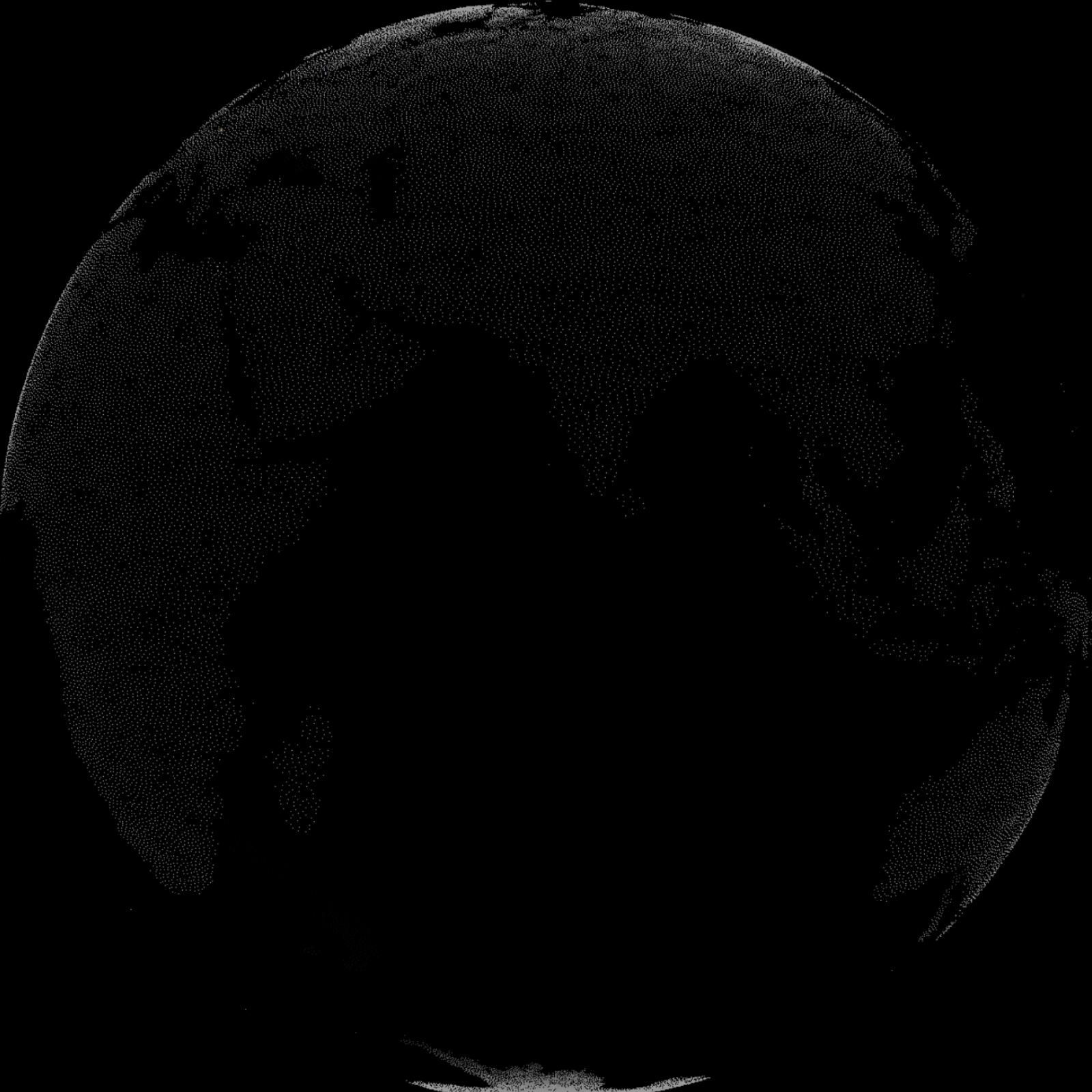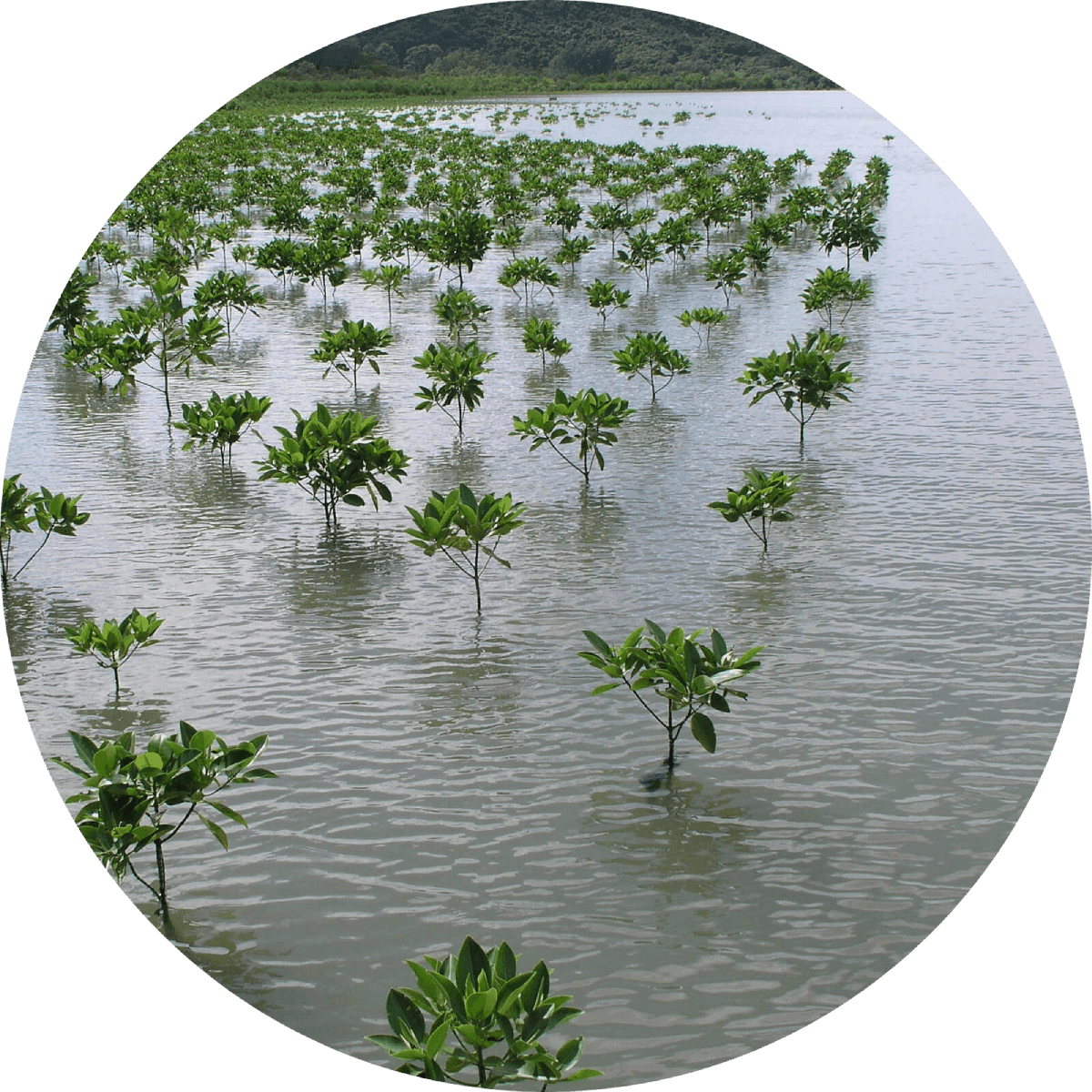“The very low-angle geometry of the Abu Dhabi coastline results in this region being extremely sensitive to fluctuations in sea level. Even small changes in relative sea level will result in significant lateral shifts in facies belts. For example, current estimates of eustatic sea-level rise of 3.3 mm/yr would result in marine transgression of the Abu Dhabi shoreline at a rate of 8.25 m/yr.”
“Seagrass meadows are hotspots for carbon accumulation in the biosphere, with stores comparable to temperate and tropical forests... The most extensive seagrass meadows in the Arabian Gulf are found along the coast of Abu Dhabi in the United Arab Emirates, which have been estimated to cover 5,500 km2... The total CO2 stored in Abu Dhabi’s seagrass beds is roughly 70% of the total annual CO2 emissions as reported by AlFarra and Abu-Hijleh... Many marine environments within the Arabian Gulf face threats from coastal development and land-use alterations. Industrial development, land reclamation, desalination, and oil exploration all serve to affect the health and integrity of coastal seagrass meadows, posing significant challenges to current and future rates of carbon burial.”
“The Arabian Gulf coastline of the UAE is undergoing massive infrastructure development on an unprecedented scale. The shoreline is increasingly dissected by the construction of oil and gas pipelines, road construction and shipping canals. Terrestrial- and marine-derived sediments are excavated and transported over considerable distances for use in land reclamation projects. Large-scale dredging projects deepen and widen channels whilst simultaneously constructing offshore islands, causeways and bridges. These activities are significantly modifying the dynamics of the coastline at an unparalleled rate. The impending loss of much of the remaining natural coastal system gives added impetus to the need to accurately record these natural sedimentary systems before they are irrecoverably obliterated by this anthropogenic overprint.”
“Houbara bustards, have suffered range-wide declines in recent years. Recently, most studies investigating local declines have indicated the role of excessive hunting, andto a lesser extent, predator-related mortality in exacerbating population losses in houbaras. Apart from the houbara’s intrinsic value as a charismatic species emblematic of desert environments, the houbara’s importance in a large portion of its extant habitat is due to its traditional role as the premier quarry for falconers... In recognition of reported declines in houbara densities in Saudi Arabia, the Minister of Foreign Affairs, His Royal Highness Prince Saud Al Faisal established a captive breeding center near the city of Taif in the Emirate of Makkah (the National Wildlife Research Center; NWRC), and the National Commission for Wildlife Conservation and Development (now the Saudi Wildlife Authority) in Riyadh to oversee all species conservation efforts in Saudi Arabia.”
Official closure of Kuwait’s last pearl-oyster market in the year 2000 marks the finaldemise of 7,000 years of pearling in the region.
“Elevated sea surface temperatures (SSTs) resulting from El Ninõ events in the late 1990s were associated with mass coral bleaching throughout the world. Indian Ocean reefs were the most severely impacted, with bleaching resulting in regional loss of 50–90% of coral cove. As a biogeographic subset of the Indian Ocean, the Arabian Gulf was also impacted by these increased SSTs... These high temperatures caused extensive loss of coral cover from patch reefs located along the coastline in the United Arab Emirates.... Bleaching virtually eliminated Acropora species that had constituted over 98.7% of the reef building coral in the area, and resulted in a complete loss of corals from a 7.8-km2 area in Jebel Ali alone.”
“The United States accused Iraq on Friday of releasing millions of gallons of Kuwaiti crude oil into the Persian Gulf, creating a huge slick that allied officials described as dwarfing that of the Exxon Valdez disaster. The continuing oil spill threatened a huge and unstoppable ecological disaster, but allied officials said it would have little military significance. The officials speculated that the Iraqis were trying to obstruct a possible allied amphibious landing or to contaminate the plants that produce most of eastern Saudi Arabia’s drinking water. Beaches at Khafji, on the Kuwaiti-Saudi border, were covered with heavy sludge today, and cormorants and other birds were reported to be dying by the hundreds. Television images of the beaches showed a sea as dark and thick as molasses, coming ashore in wavelets that broke with a slurping sound instead of a splash.”
“Supervised by the Environmental Research and Wildlife Development Agency (ERWDA), Al Wathba Natural Reserve is a safe wildlife haven especially for migratory birds that come to the region during the winter season. It stretches over a total area of about five square kilometres and was officially declared a natural reserve by the late Sheikh Zayed bin Sultan Al Nahyan in 1998. With granting full protection, the reserve was fenced and came under the constant surveillance to avoid any disturbance to the wildlife.”
A captive breeding program is set up at the Omani Mammal Breeding Center in order to reintroduce captive-bred individuals back into the wild.
“Bahrain today has wells of oil: they bubble, boil and spout!The pearl-industry has had its day, its fire has quite gone out!‘Now listen here,’ said pearling then, “‘I’m boss, there is no doubt, What proof? Well, they all work for me who’re living hereabout.I raised them as my own; they are my heart, my very breath,But you, fountain of oil and tar, you’re starved them half to death!’‘Mark my words,’ said pearling then, ‘pay heed to what I say,Oil-wells, you lack humanity, what nonsense you purvey!In my day if you’d come along, you’d not have found two men,Prepared to work for you; such thoughts were scotched right there and then’”
“Pearl fishing is the premier industry of the Persian Gulf; it is, besides being the occupation most particular to that region, the principal or only source of wealth among the residents of the Arabian side. Were the supply of pearls to fail, the trade of Kuwait would be severly crippled, while that of Bahrain might — it is estimated — be reduced to about one-fifth of its present dimensions and the ports of Trucial ‘Oman, which have no other resources, would practically ceast to exist”


Learn about Maya Lin’s fifth and final memorial: a multi-platform science based artwork that presents an ecological history of our world - past, present, and future.

Discover ecological histories and stories of former abundance, loss, and recovery on the map of memory.

Learn how we can reduce our emissions and protect and restore species and habitats – around the world.

See how art can help us rethink the problems we face, and give us hope that each one of us can make a difference.

Help make a global memorial something personal and close to home. Share your stories of the natural world.